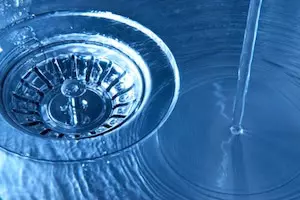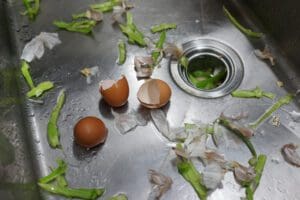
What You Should Know About a Slow Drain
If you’ve ever dealt with a slow drain, you’re probably familiar with the cycle that ends up happening. The drain works perfectly fine for a while. Then, it gets slower and slower. Eventually, it reaches the point where it seems like it is barely draining at all.
When this happens, the only thing to do is to deal with it. The only way to deal with it is to clean the drain. So, if you’re wondering how to fix a slow sink drain, make sure you keep reading.
How to Fix a Slow Sink Drain?
The method you use to fix a slow drain varies from case to case. It will depend on what is causing the drain to run slower than it should. The main culprits are:
- Hair
- Wipes or toilet paper
- Food or grease
Figure out which is clogging your drain, then you can make a plan to fix it and prevent the problem in the future.
Hair
Hair is a common issue that causes drains to run slowly. Hair naturally falls out and falls into the drain. There, it builds up until it reaches a point where it disrupts the flow of water. This most commonly happens in the shower, where it can lead to a slow shower drain that causes water to pool up around you. While this is the most common situation, it can also impact other drains, such as some floor drains where hair may end up falling.
When fixing a slow drain caused by hair, you can start with the easy approach. Remove any hair that is visibly stuck to the drain. If that doesn’t work, remove the drain cover and clean underneath it, as there will likely be hair collecting there as well. In either case, your objective is to remove as much hair and other blockages as you can.
If the problem still persists, you will need to move on to advanced cleaning methods. You can use a drain snake to reach deep into the drain and pull out hair that is stuck further down. If you don’t have a drain snake, you can contact a professional plumbing service, as they will have tools that are even more advanced than most basic drain snakes.
Wipes/Toilet Paper
Many people flush wipes and toilet paper down the toilet without any worry. However, these substances, particularly wipes, can get lodged in the drain. This most commonly happens when many are used at once.
The first thing to do when unclogging a toilet slow drain like this is to try using a plunger. Sometimes, this will provide just enough force to dislodge the clog. Just use the plunger like you normally would and try the toilet again. It may take a few tries before you can dislodge the clog properly.
If this doesn’t work, even after a few tries, other options exist. You can try to use a drain snake to physically break up the clog. In addition, some drain cleaners have enough power to disintegrate either wipes or toilet paper. If none of these methods work, you will have to go with a professional plumbing service for help.
You can even make a natural drain cleaner. To do this, mix near-boiling water with baking soda and vinegar. Then, pour it into the drain. This won’t work on tough jobs but can be helpful with some minor ones.
Food/Grease 
Another common reason people need to figure out how to fix a slow sink drain comes from food and grease. In the kitchen sink, both of these can fall into the drain and start to clog things up.
Food usually forms a more obvious block. A block from food usually comes from chunks of food that fall into the drain and start to pile up. Sometimes, it may be due to something large falling in and entirely blocking the drain.
Luckily, food is easy to get out of the way. You can clear most food blocks on your own by using your hand or some sort of brush. If the clog is deeper, you’ll have to use something longer, like a drain snake. In any case, the objective is to clear as much food as possible from the drain so that water can flow properly.
While food creates an obvious block, grease is more subtle. After all, most people see grease as a liquid, so they imagine it should simply pour down the drain like normal. However, grease can solidify while in the drain. If this happens, it creates a blockage that is just as bad as any other type of blockage. However, since grease clumps up and isn’t as easy to pull out as food chunks, removing it can be trickier.
To remove grease from a slow sink drain, start by trying to physically remove anything you can. This may get some water flowing but will likely leave the sides of the drain still coated with grease. To remove this, pour some dish soap into the drain. Dish soap is specifically designed to fight grease, so it will be effective at removing it. Let the dish soap sit in the drain for a little while, and then pour down some hot water to clear it out. You can try this process over again if there is still grease in the drain.
Drain Cleaning
When dealing with a slow drain, the problem can come from a variety of different angles. It can result from hair piling up, wipes blocking the drain, or food creating a blockage. In any case, the best way to fix a slow drain is to clean it.
The best way to clean a drain is with professional drain cleaning. A plumbing professional will be able to clean your drains in a way that removes anything blocking them. They will be able to do this quicker, easier, and in a way that is more effective than anything you could do at home. Plus, when you choose a professional like A-Absolute, you can get same-day service, quickly dealing with your annoying drain problems.


